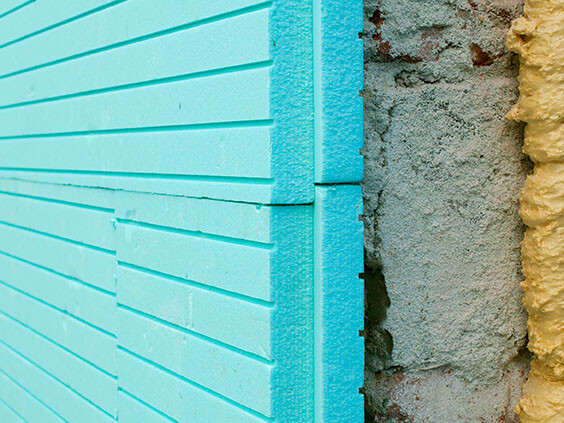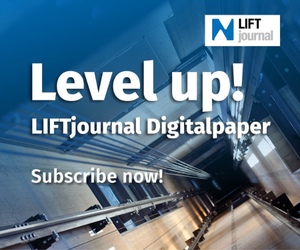Noise insulation in lift building: a closed book?
Building installations, i.e., also lifts, necessarily produce noise during operation. The vertical transport of people and loads results in airborne and structure-borne noise emissions.
But as so often, it is amount of the dose that makes something poisonous. What counts is the level of the noise in the room requiring protection. Standards prescribe the maximum values to make it clear what is permitted. But how is observing the specified limits possible?
A new series in LIFTjournal aims to answer this question. The eight articles by Ulrich Nees and Jan König will look into these subjects and hopefully ensure that in the end noise insulation is no longer a closed book to readers.
These are the topics:
1. Relevance of noise insulation in lift construction
2. Structure-borne noise emissions
3. Influence of the pressure resistance class of concrete on noise transmission
4. Structure-borne noise emissions on the lift according to DIN 8989
5. Mounting of motors/machinery
6. Reduction of prestressing force in screw fittings
7. Airborne noise emissions on the lift
8. Travel quality according to ISO 18738
The importance of noise insulation in lift building
The demands of property owners and tenants on structural quality and the associated noise insulation are constantly increasing. No wonder. This is because property prices are rising continually. This results in a discrepancy, which also has consequences for noise insulation in lift building.
Companies frequently seek savings in building materials and quality due to rising raw material prices, wage costs and the shortage of skilled labour. Building owners naturally also want to save time and money, but at the same time obtain ecological and sustainable construction methods in line with social and political trends.
Nevertheless, the building should still not cost too much – and this can result in the building being of poor quality in the end. Savings are made in all aspects of construction, especially wall thickness. The unavoidable result of this is that noise insulation targets, including in lift construction, cannot be met.
Practice
 During the technical planning, concrete qualities are already defined that cannot meet the requirements of DIN 8989 regarding surface-related mass. Photo: © deyangeoriev, iStockphoto.com
During the technical planning, concrete qualities are already defined that cannot meet the requirements of DIN 8989 regarding surface-related mass. Photo: © deyangeoriev, iStockphoto.comDuring the technical planning, concrete qualitiy classes are already defined that cannot meet the requirements of DIN 8989 regarding surface-related mass. The following strength classes exist for normal concrete for erecting lift shafts: C12/15, C16/20, C20/25, C25/30, C30/37, C35/45, C40/50 and C50/60. For lifts up to 1,000 kg and 1.6 m/s nominal speed, the strength classes C20/25 and C25/30 are advisable.
The structural framework is protected against physical and chemical impairment by suitable types of concrete and adequate concrete cladding. The fitness for purpose of the building is thereby guaranteed for the entire period of use. Natural vibration is also largely avoided.
The reinforcement is an important point in planning and erection. To achieve a good reinforcement layout, a concrete panel with a span of 4.50 m should be at least 20 cm thick. In addition, noise bridges need to be avoided between reinforcement and anchor rails. If there are connections here, there is a much higher noise transmission from the lift to the neighbouring rooms that may require protection.
Knowledge of these factors in concrete construction is only available to a limited extent. The consequences can be demonstrated - even retrospectively - by means of imaging radar measurements. However, they can only be ameliorated or corrected at considerable expense.
Noise insulation targets no longer achievable
Noise insulation in lift construction has been repeatedly a topic in the media and at events – especially the importance of the components selected and their assembly quality. Raw material prices and the shortage of skilled labour also play a decisive role here.
Given these conditions and decisions, it is no wonder that achieving the noise insulation targets demanded is increasingly not feasible. Due to the natural vibration (structure-borne noise level) of the lift shaft wall, noise insulation according to DIN 8989 table 3 can only just be observed with the lift switched off. As a result, the moving lift can no longer achieve the permissible noise level in rooms that need to be protected.
This at first seems incorrect but is caused by numerous conditions. The quality of the concrete, its processing, and the location of the reinforcement to the nearest concrete surface or wall play a decisive role here.
Conclusion
The lift is not necessarily to blame if the noise protection targets are not achieved in rooms requiring protection. Tests and inspection procedures can clarify to what extent the lift shaft negatively influences the permissible noise insulation targets according to DIN 8989. The airborne and structure-borne noise emissions of the lift must be determined without significant interference if the source of the trouble is to be clearly identified.
To evaluate the lift, the technical data of the lift, information about the design of the lift shaft, such as surface-related mass, the airborne and structure-borne noise level emitted and the frequencies as well as the fatigue limit class of the concrete must be obtained. Based on the data and test results, an expert opinion can determine and evaluate the share of the blame of the trades involved.
Shared responsibility in the sense of personal fault already arises if the client holds back important information or omits the protective measures required. On the other hand, it must be kept in mind that shared responsibility for a tendering body can arise with a defect if important information is missing in the specifications.
By Jan König and Ulrich Nees


























Write a comment